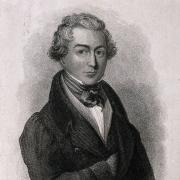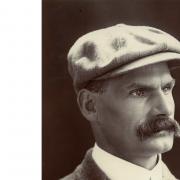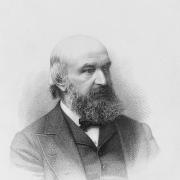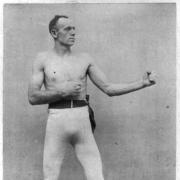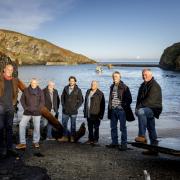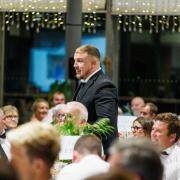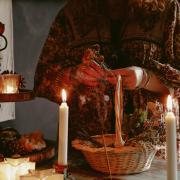Bagpipers are to be found tucked away in most musical cultures and Cornwall is no exception, writes Merv Davey. The folklore of West Penwith has pipers playing a lament at the defeat of the Cornish by the English King Athelstan following an as yet unidentified 10th century battle. Puritan ideas encouraged the legend of demonic pipers who played for dancing on a sabbath with the result that the whole party were turned into standing stones as a punishment. In Cornish folk tales the pipers played for dancing around the May Pole during fairy revels and Cornish Buccaneers made their prisoners dance by pricking them with forks for as long as the piper could play.
Our first glimpse of pipers in historical record comes with the accounts for the Earldom of Cornwall 1296 – 1297 where Iohanna the wife of Henrici Piper of Trigg, paid a fine of 2 shillings and sixpence to have him released from prison. Quite what the Piper of Trigg had done to warrant such a fine is left to our imaginations but 2/6 was a fortune in the 13th century!

A piper was employed to play for the Lostwithiel Riding in 1536 and in Camborne in 1550 the 'piper in the play' was paid 4d. The play in question was likely to have been the Camborne mystery play Bewnans Meriasek (The life of Meriasek – Patron saint of Camborne). During the play the minstrels are instructed: 'Pybough Menstrels volonnek may hyllyn donsia dyson' - pipe you hearty minstrels, that we might dance without delay. There are similar instructions in all the Cornish medieval drama, painting a colourful picture of our early Cornish pipers mingling with the dragons, the demons, saints, and mock royalty that populated these plays.
Carvings in Cornish churches give us an idea of what these pipers and their bagpipes may have looked like. Some like the piping pig at Braddock Church are common medieval icons, others provide quite a lot of detail. The statue on the church tower at St Austell has a quite convincing set of pipes as does the bench end at Davidstow Church but the ultimate piper is to be found in St Nonna’s Church at Altarnun. A beautiful bench carving provides fine detail down the actual finger holes – plus the piper’s dog attentively watching on. The Altarnun piper is accompanied by dancers, a jester and another musician with a three-stringed fiddle-like instrument called a 'crowd'.

A few miles away on the East wall of Launceston Church the Minstrels of St Mary’s also have a piper in their midst. Sadly, the figures are too eroded to provide much detail, but the borough accounts show that these minstrels were popular entertainers for several generations. They clearly had a good time; on one occasion the minstrels together with the mayoral entourage are recorded as consuming three gallons and a quart of wine.

Our last historical glimpse of Cornish bagpipes is the hiring of a piper in 1683 by William Thomas, a West Cornwall landowner, and shepherd, to provide entertainment for his workers. The pipers were eventually replaced by fiddlers and the village musical ensembles who were precursors to our modern day brass bands.
The melody on bagpipes is played by fingering the 'chanter' and the interesting feature of the instruments depicted in the Cornish carvings is that they have two chanters side by side. Whilst a double chanter is not unique to Cornwall it is certainly unusual and the fine detail of the bagpiper at Altarnun has been the inspiration for makers to try their hand at reconstructing the Cornish bagpipes with some success. The resulting instruments have an organ like quality and sound quite different from the more familiar Scottish and Irish bagpipes.

Bagpipes, Cornish and otherwise, have enjoyed a revival of interest in Cornwall in recent years. The ceremonial bardic procession of Gorsedh Kernow is led by a piper and St Piran’s Day celebrations in March culminate with a piper on the battlements of Launceston Castle. Bagpipes are a popular instrument for Cornish folk bands and have woven themselves happily back into the folk customs with which they were once associated.
To learn more and hear the Cornish pipes visit cornishnationalmusicarchvie.com







